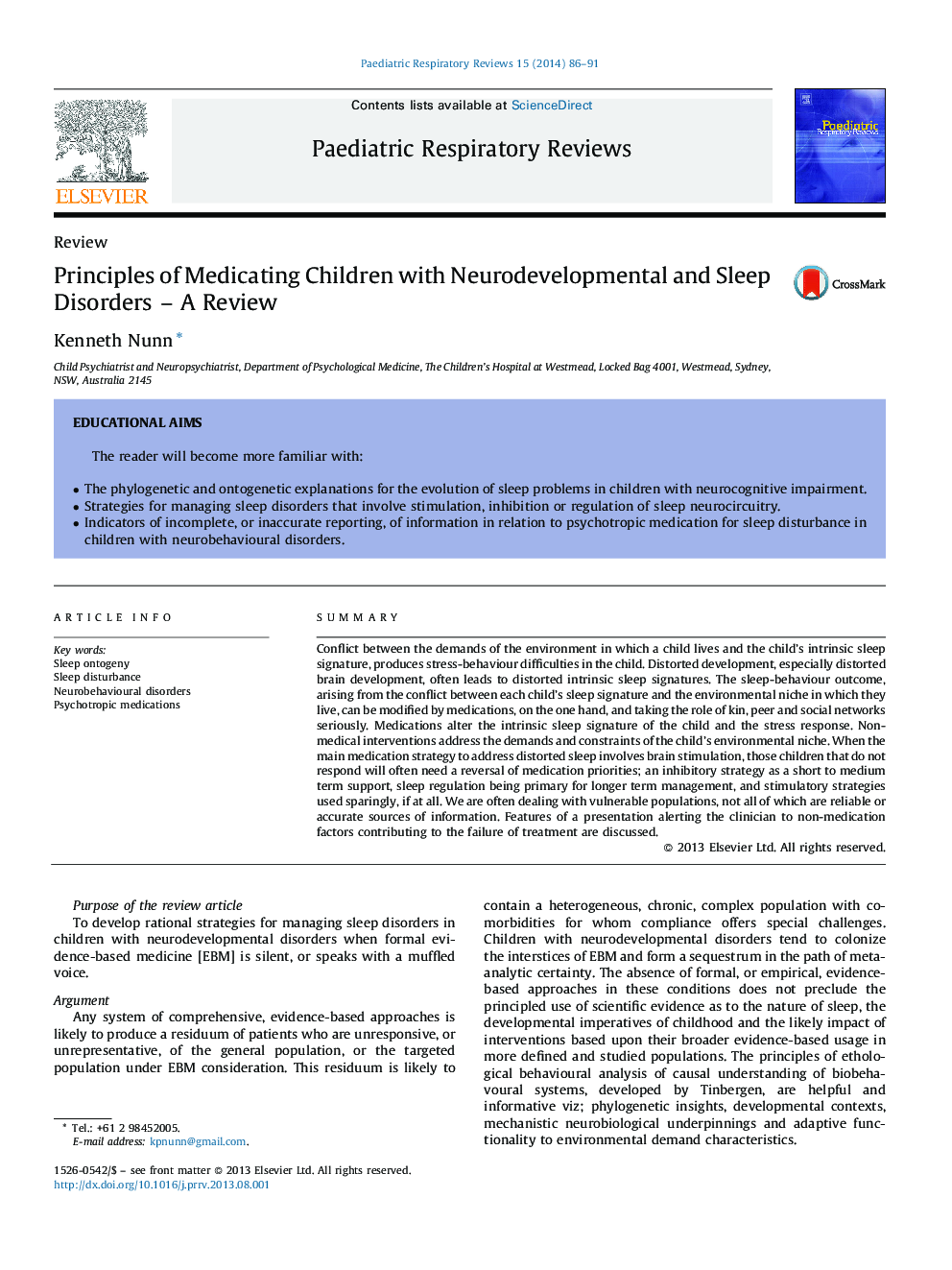| Article ID | Journal | Published Year | Pages | File Type |
|---|---|---|---|---|
| 4170935 | Paediatric Respiratory Reviews | 2014 | 6 Pages |
SummaryConflict between the demands of the environment in which a child lives and the child's intrinsic sleep signature, produces stress-behaviour difficulties in the child. Distorted development, especially distorted brain development, often leads to distorted intrinsic sleep signatures. The sleep-behaviour outcome, arising from the conflict between each child's sleep signature and the environmental niche in which they live, can be modified by medications, on the one hand, and taking the role of kin, peer and social networks seriously. Medications alter the intrinsic sleep signature of the child and the stress response. Non-medical interventions address the demands and constraints of the child's environmental niche. When the main medication strategy to address distorted sleep involves brain stimulation, those children that do not respond will often need a reversal of medication priorities; an inhibitory strategy as a short to medium term support, sleep regulation being primary for longer term management, and stimulatory strategies used sparingly, if at all. We are often dealing with vulnerable populations, not all of which are reliable or accurate sources of information. Features of a presentation alerting the clinician to non-medication factors contributing to the failure of treatment are discussed.
